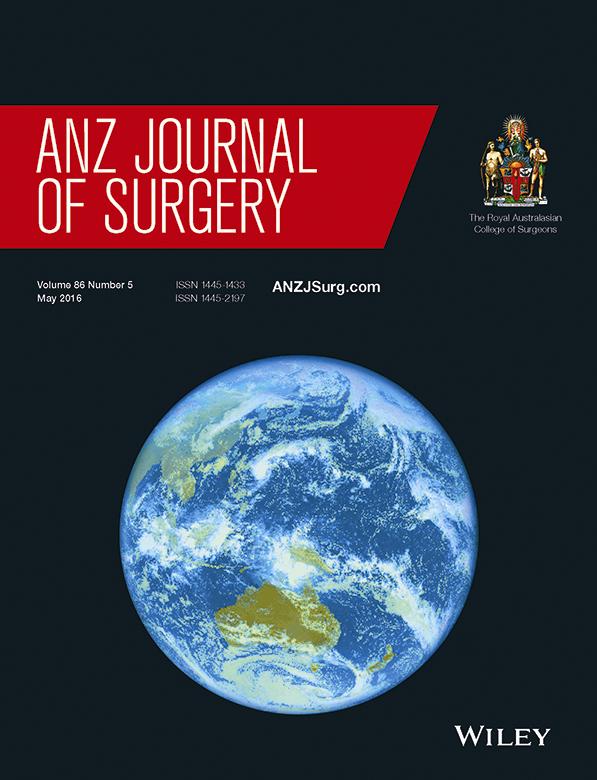Single-institution review of managing dermatofibrosarcoma protuberans
Abstract
Background
Dermatofibrosarcoma protuberans (DFSP) is a rare locally advanced soft-tissue tumour that is often misdiagnosed at presentation, resulting in inadequate initial resection, requiring multiple resections and reconstructive procedures. We reviewed our experience and treatment outcomes with this tumour and propose a treatment strategy.
Methods
A retrospective study on 25 patients with 26 lesions treated from 1997 to 2013 was conducted.
Results
The median age of presentation was 44 years old and the median lesion size was 3.0 cm. The median number of resections required to achieve clear margins was 2. Eight per cent of lesions in the head and neck required a second surgery, significantly more than other regions (P = 0.004). Five patients had frozen section performed that allowed immediate re-resection in all to obtain clear margins in 80% when final histology returned. Fourteen patients (56%) required reconstruction following wide excision, five of whom had DFSP in the head and neck. Four patients developed a local recurrence and had a repeat wide excision. The median time to recurrence was 11.3 months. Median follow-up time was 29.8 months.
Conclusion
Wide local excision with 2-cm gross margins remains the mainstay of treatment. Lesions in the head and neck region tend to have smaller margins and a greater likelihood of positive margins. We propose that the initial resection must be aggressive, even if a flap is necessitated. Frozen section histology with immediate re-resection reduces the need for repeat surgeries. Primary closure is ideal; but in areas where complex reconstruction is required, it is prudent to delay until final histology has cleared the margins.




